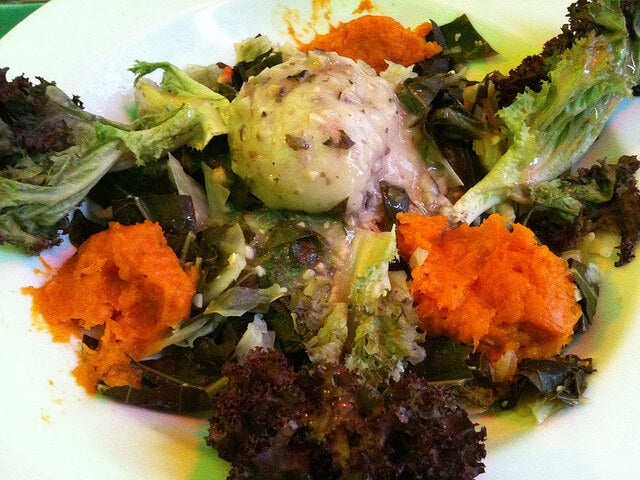I felt so awful, but I couldn’t help asking what she does when a host offers up a non-kosher main dish. First, there is almost always enough food at any party for her to get her fill without eating off-limit food. Second, the Jewish culture considers it rude to reject food offered under someone else’s roof. To sum up, she is the only person responsible for meeting her dietary needs.

You may find this surprising, but many etiquette experts agree with that last statement whether it applies to a guest with a selective palate, dietary restrictions, or food sensitivity such as an allergy. The onus is on the person with the special need; it is her responsibility to bring prepared foods that meet her particular needs.
That’s the etiquette side and I don’t disagree with it. I just don’t adhere to it. If I am feeding someone, it is an act of love. I want my guests to feel at home in my home. When I volunteer to bring a dish to someone else’s party, I want to bring something everyone will have the chance to enjoy.
It’s natural to feel a bit lost when it comes to cooking food to accommodate a diet different from your own, especially if we’re talking about meals and snacks for a week-long house guest. Here are a few suggestions to make your labor a little less daunting.

Ask What They Buy
Really, it is that simple. Chances are your guest will insist you not go through any trouble, so make it clear that you want to have a few things on hand to help make her stay more comfortable. Making sure I have my friend’s favorite brand of gluten-free chocolate cookies is the same as keeping candied grapefruit on hand when my mom visits. It is a nicety for someone I like and I’m happy to do it.
Check Your Favorite Recipes
I bet a lot of your usual fare either meets the needs of the party being fed, or can be tweaked to do so.
When my best friend, who is Jewish, visits, she skips the bacon I serve with Sunday breakfast and enjoys the hamburgers, chicken tortellini, and vegetarian lasagna I serve during her stay. She also joins us for a glass of red wine, but I suppose that is beside the point.

Make Sure You (and Your Guests) Know Your Limits
If you find yourself short on acceptable meals, feel free to dig up some new recipes, but be realistic. Experimenting with one new recipe can be fun; trying to cook a week’s worth of meals you’ve never prepared before is stressful and possibly expensive. A stressed hostess makes her guest feel exactly the opposite of “at home.” As I mentioned above, let your company know how much you are able to do, then ask him to help you fill in the mealtime gaps.

Research Local Restaurants
I love taking visitors to my favorite eateries -- mostly because my friends occasionally need reminding of my excellent taste in food, but also because I want to show my company a good time. And not cook that night.
However, when treating a friend with a restricted diet, do your homework! Look up menus online to make sure your “usual” offers dishes for everyone in your party. You can also do web searches such as “vegetarian (insert city here).” Or go old school and simply call your choice establishment.
Plum Deluxe readers are pretty savvy, so I bet you saw this last tip coming: enjoy your guests. Hosting friends should be a low-pressure situation -- that’s why we like these people. They’ll understand if the best you can do is supply between-meal munchies and they’ll go to your favorite (researched) restaurant to laugh after you totally botch that polenta. Maybe next time, they’ll do the cooking.
Photo credits: roboppy, Carrie Keplinger, Renée S. Suen, and Carl Black.

![Holiday Tea Variety Pack [6-Pack Variety of Flavors]](http://www.plumdeluxe.com/cdn/shop/files/holidayTeaVarietyPack.png?v=1759777907&width=165)















